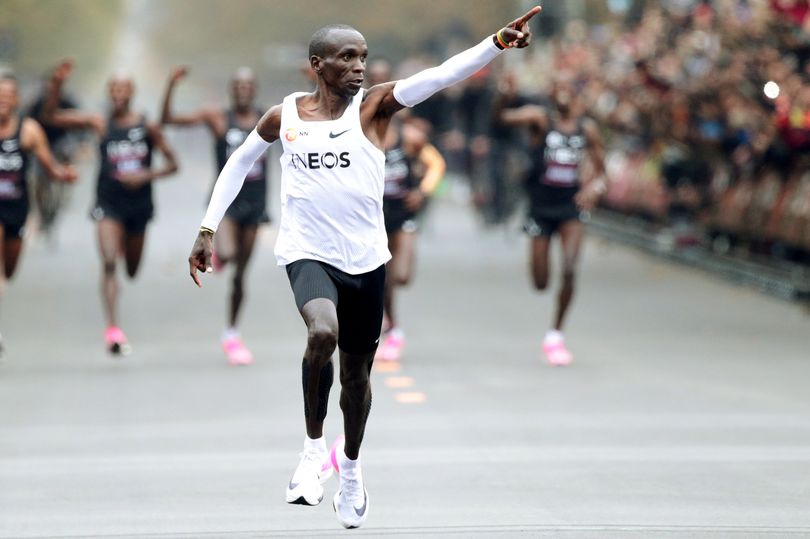
By Robert Herron, MA, CSCS*D, ACSM-CEP |
An historic weekend of racing has now come and gone – leaving many in its wake full of amazement – while others are full of questions.
Kenyan-born marathon runner Eliud Kipchoge, 34, became the first person to complete a marathon (26.2 miles or 42.195 km) in under two-hours, crossing the finish line in 1:59:40 in Vienna on Saturday. Yeah, completing a marathon at a 4:34 min/mile pace for 26.2 miles is fast. If the pace would have been 4:35 min/mile, we would still be waiting on a human to run sub, two-hour marathon today.
Not to be outdone, another one of Kenya’s own, 25-year-old Brigid Kosgei, broke the Women’s World Record in the Chicago Marathon on Sunday. Her time of 2:14:04, shattered the pervious world record by 81 seconds and beat the nearest competitor on race day by nearly seven-minutes.
Before we go any further, and assuming no doping-related issues emerge, everyone should recognize how amazing both of these performances were.
Brigid had an incredible road-race plan to optimize her performance and, luckily the weather for both races was within an ideal range. Brigid set a new standard and, importantly, this record will shift future expectations.
There is a little more room for a nuanced debate with respect to – how should people contextualize Kipchoge’s performance. It is true that Kipchoge’s record-breaking time was not during an officially-sanctioned race. Eliud’s event was meticulously planned. The event took place on a flat course and included 35 pacesetters – who rotated in groups of seven forming a “flying-V” to help mitigate the impact of air resistance. The pacesetters ran at a pre-determined pace, following green lasers projected on the track by a leading, electric-pace car. Kipchoge received fuel to drink and eat, in the form of liquid and gels, brought to him by cyclist. His shoes are special. We do not actually know exactly how special but we do know they are uniquely-designed Nike shoes that aren’t available to the public as of today. All things considered, the optimal equipment and conditions absolutely helped Kipchoge run sub two-hours but he still ran all those miles – very quickly.
In the big-picture, how much does the situation really matter in celebrating a milestone such as this? Roger Bannister’s initial breaking of the four-minute mile also came during an unsanctioned event, with pacers, and cutting-edge shoes. A feat that few thought would be possible was broken, then quickly topped in competition a month later, and by ≈ 1,500 people since. Technological advances are extremely important but so too is the idea that the ceiling is now higher.
Dr. Michael J. Joyner, a leading physiologist with an interest in elite athletes, published in 1991 that, on the basis of physiological factors, substantial improvements in marathon times were achievable – a 1:57:58 time in his predictive model. So, I believe the most exciting question is – what will we see next?
Records are meant to be broken.
Robert L. Herron is a faculty member at the United States Sports Academy. Robert is a Certified Strength and Conditioning Specialist® with distinction from the National Strength and Conditioning Association (NSCA-CSCS*D®) and a Clinical Exercise Physiologist through the American College of Sports Medicine (ACSM-CEP®). rherron@ussa.edu